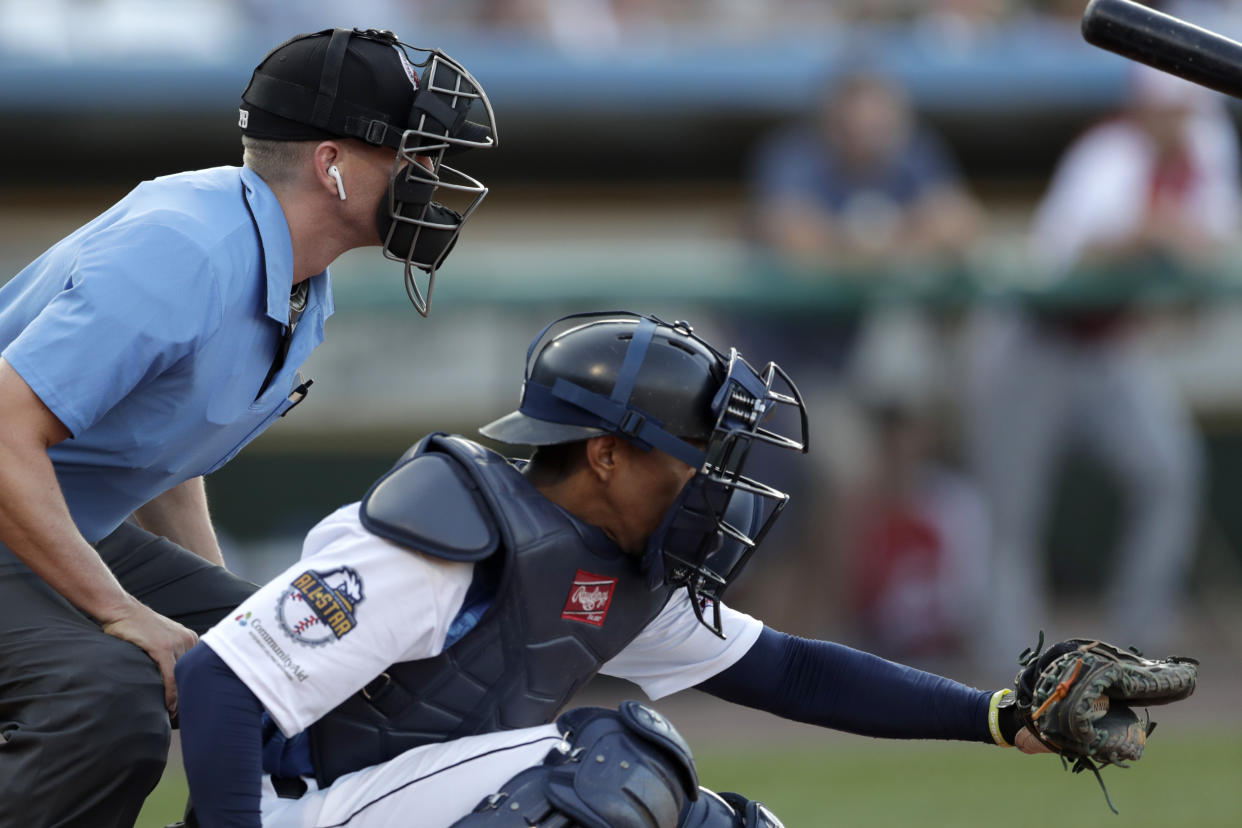Giants prospect ejected for arguing balls and strikes ... with a robot

It’s a tale as old as baseball. A player strikes out on a call that has every viewer scratching their heads. The player starts yelling at the umpire behind the plate. The umpire ejects the player for challenging his authority.
On that basis, San Francisco Giants prospect Jacob Heyward’s ejection from an Arizona Fall League game on Tuesday is nothing new. What was new was that Heyward — the brother of Chicago Cubs outfielder Jason Heyward — wasn’t arguing with the ump’s judgement call.
He was arguing with a computer system that had tracked the ball through radar and used specialized software to determine if it hit the strike zone. A robot ump.
Some players are not fans of robot ump
For the first time ever, the AFL — often used as MLB’s laboratory for rule changes and new equipment — is experimenting with robot umps, per MLB.com. The pitch tracking software at Salt River Fields reads the pitch, determines if it was a ball or strike, then relays the decision to the home plate umpire through an ear piece.
In Heyward’s case, the pitch that got him so heated was a curveball caught near the dirt. Most umpires would call such a pitch a ball, but the robot ump saw it nick the bottom inside corner of the zone. Heyward struck out looking, voiced his displeasure as he walked away and was soon ejected.
Heyward was understandably heated about the situation, but a peak into the comments of MLB Pipeline’s Instagram post show he’s not alone among minor league players unhappy with the robot ump.
“Turn it off,” said the Seattle Mariners’ Julio Rodriguez.
“Yikes,” said the Los Angeles Dodgers’ Josiah Gray.
“Is this enough proof that automated strike zones are a no-go?” asked the Cleveland Indians’ Brock Harston.
Those players might be in the minority, but they’re still an indication that a transition to robot umpires in the major leagues might not go as smoothly as some imagine.
Decades of intricacies have built up in how the strike zone is called. It’s different for righties and lefties, fastballs and off-speed pitches, nimble-handed catchers and Gary Sanchez. It will be different and frustrating for players, but odds are it will be a similar experience for fans used to seeing a fastball under a left-handed batter’s arm pits called for a ball or a curveball held up in the zone by a strong catcher ruled a strike.
It will probably be worth it in the long run to inject some objectivity into the world of balls and strikes, but any change would likely require a significant adjustment period for all involved.
More from Yahoo Sports:


